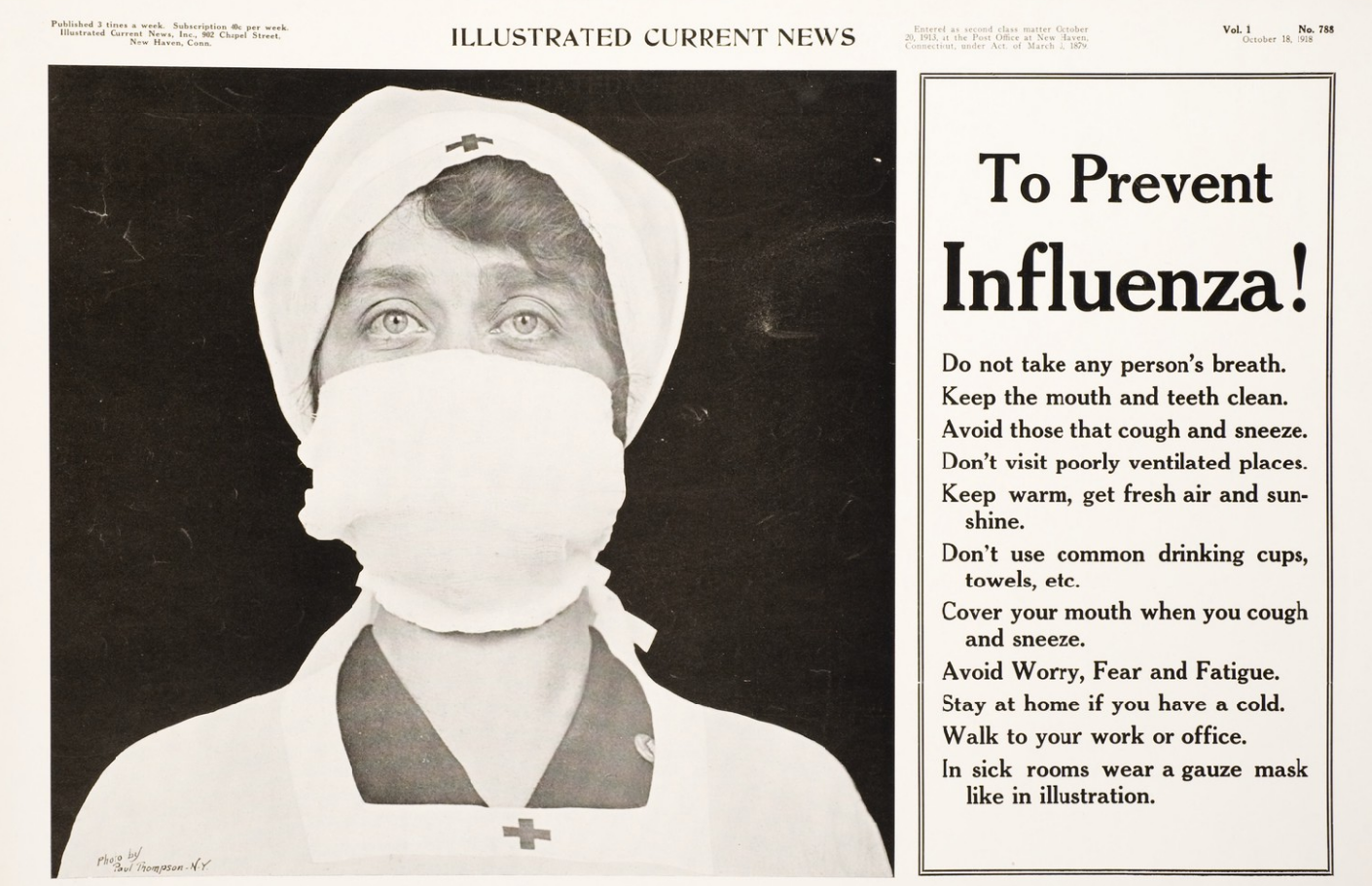|
Matthias Hoffmann
Matthias Hoffmann ( 1780 – 3 April 1851) was a Canadian physician and health officer. Hoffmann was likely born in Italy. He served as a medical assistant and surgeon with the Royal Navy before settling in Nova Scotia in 1811, working with prisoners of war at Melville Island. Also in 1811 he married Charlotte Mansfield, with whom he would have eight children. He left the navy in 1815 and began working in private practice. He returned to Melville Island in 1831 as one of three physicians operating a quarantine hospital during an outbreak of smallpox. This marked the beginning of his involvement in public health: during a later cholera outbreak he was appointed to the new role of "health warden", the duties of which "ranged from supervising the cleaning of yards to the removal of the ill to the cholera hospitals". In 1840 he was appointed health officer after the incumbent died of typhus Typhus, also known as typhus fever, is a group of infectious diseases that include ... [...More Info...] [...Related Items...] OR: [Wikipedia] [Google] [Baidu] |
Royal Navy
The Royal Navy (RN) is the United Kingdom's naval warfare force. Although warships were used by Kingdom of England, English and Kingdom of Scotland, Scottish kings from the early medieval period, the first major maritime engagements were fought in the Hundred Years' War against Kingdom of France, France. The modern Royal Navy traces its origins to the early 16th century; the oldest of the British Armed Forces, UK's armed services, it is consequently known as the Senior Service. From the middle decades of the 17th century, and through the 18th century, the Royal Navy vied with the Dutch Navy and later with the French Navy for maritime supremacy. From the mid 18th century, it was the world's most powerful navy until the World War II, Second World War. The Royal Navy played a key part in establishing and defending the British Empire, and four Imperial fortress colonies and a string of imperial bases and coaling stations secured the Royal Navy's ability to assert naval superiority ... [...More Info...] [...Related Items...] OR: [Wikipedia] [Google] [Baidu] |
Nova Scotia
Nova Scotia ( ; ; ) is one of the thirteen provinces and territories of Canada. It is one of the three Maritime provinces and one of the four Atlantic provinces. Nova Scotia is Latin for "New Scotland". Most of the population are native English-speakers, and the province's population is 969,383 according to the 2021 Census. It is the most populous of Canada's Atlantic provinces. It is the country's second-most densely populated province and second-smallest province by area, both after Prince Edward Island. Its area of includes Cape Breton Island and 3,800 other coastal islands. The Nova Scotia peninsula is connected to the rest of North America by the Isthmus of Chignecto, on which the province's land border with New Brunswick is located. The province borders the Bay of Fundy and Gulf of Maine to the west and the Atlantic Ocean to the south and east, and is separated from Prince Edward Island and the island of Newfoundland (island), Newfoundland by the Northumberland Stra ... [...More Info...] [...Related Items...] OR: [Wikipedia] [Google] [Baidu] |
Melville Island (Nova Scotia)
Melville Island is a small peninsula in Nova Scotia, Canada, located in the Northwest Arm of Halifax Harbour, west of Deadman's Island. It is part of the Halifax Regional Municipality. The land is rocky, with thin, acidic soil, but supports a limited woodland habitat. The site was discovered by Europeans in the 17th century, though it was likely earlier explored by Indigenous peoples. It was initially used for storehouses before being purchased by the British, who built a prisoner-of-war camp to hold captives from the Napoleonic Wars and later the War of 1812. The burial ground for prisoners was on the adjacent Deadman's Island. Later, Melville Island was used as a receiving depot for Black refugees escaping slavery in the United States, then as a quarantine hospital for immigrants arriving from Europe (particularly Ireland). It briefly served as a recruitment centre for the British Foreign Legion during the Crimean War, and was then sold to the British for use as a military pr ... [...More Info...] [...Related Items...] OR: [Wikipedia] [Google] [Baidu] |
Smallpox
Smallpox was an infectious disease caused by variola virus (often called smallpox virus) which belongs to the genus Orthopoxvirus. The last naturally occurring case was diagnosed in October 1977, and the World Health Organization (WHO) certified the global eradication of the disease in 1980, making it the only human disease to be eradicated. The initial symptoms of the disease included fever and vomiting. This was followed by formation of ulcers in the mouth and a skin rash. Over a number of days, the skin rash turned into the characteristic fluid-filled blisters with a dent in the center. The bumps then scabbed over and fell off, leaving scars. The disease was spread between people or via contaminated objects. Prevention was achieved mainly through the smallpox vaccine. Once the disease had developed, certain antiviral medication may have helped. The risk of death was about 30%, with higher rates among babies. Often, those who survived had extensive scarring of ... [...More Info...] [...Related Items...] OR: [Wikipedia] [Google] [Baidu] |
Public Health
Public health is "the science and art of preventing disease, prolonging life and promoting health through the organized efforts and informed choices of society, organizations, public and private, communities and individuals". Analyzing the determinants of health of a population and the threats it faces is the basis for public health. The ''public'' can be as small as a handful of people or as large as a village or an entire city; in the case of a pandemic it may encompass several continents. The concept of ''health'' takes into account physical, psychological, and social well-being.What is the WHO definition of health? from the Preamble to the Constitution of WHO as adopted by the International Health Conference, New York, 19 June - 22 July 1946; signed on ... [...More Info...] [...Related Items...] OR: [Wikipedia] [Google] [Baidu] |
Cholera
Cholera is an infection of the small intestine by some strains of the bacterium '' Vibrio cholerae''. Symptoms may range from none, to mild, to severe. The classic symptom is large amounts of watery diarrhea that lasts a few days. Vomiting and muscle cramps may also occur. Diarrhea can be so severe that it leads within hours to severe dehydration and electrolyte imbalance. This may result in sunken eyes, cold skin, decreased skin elasticity, and wrinkling of the hands and feet. Dehydration can cause the skin to turn bluish. Symptoms start two hours to five days after exposure. Cholera is caused by a number of types of ''Vibrio cholerae'', with some types producing more severe disease than others. It is spread mostly by unsafe water and unsafe food that has been contaminated with human feces containing the bacteria. Undercooked shellfish is a common source. Humans are the only known host for the bacteria. Risk factors for the disease include poor sanitation, not enou ... [...More Info...] [...Related Items...] OR: [Wikipedia] [Google] [Baidu] |
Health Officer
A medical officer of health, also known as a medical health officer, chief health officer, chief public health officer or district medical officer, is the title commonly used for the senior government official of a health department, usually at a municipal, county/district, state/province, or regional level. The post is held by a physician who serves to advise and lead a team of public health professionals such as environmental health officers and public health nurses on matters of public health importance. The equivalent senior health official at the national level is often referred to as the chief medical officer (CMO), although the title varies across countries, for example known as the surgeon general in the United States and the chief public health officer in Canada. Australia The national senior adviser on health matters is known as the ''chief medical officer'', while those at state and territory level are mostly known as the ''chief health officer'' (CHO), with one CMO a ... [...More Info...] [...Related Items...] OR: [Wikipedia] [Google] [Baidu] |
Typhus
Typhus, also known as typhus fever, is a group of infectious diseases that include epidemic typhus, scrub typhus, and murine typhus. Common symptoms include fever, headache, and a rash. Typically these begin one to two weeks after exposure. The diseases are caused by specific types of bacterial infection. Epidemic typhus is due to '' Rickettsia prowazekii'' spread by body lice, scrub typhus is due to ''Orientia tsutsugamushi'' spread by chiggers, and murine typhus is due to '' Rickettsia typhi'' spread by fleas. Vaccines have been developed, but none are commercially available. Prevention is achieved by reducing exposure to the organisms that spread the disease. Treatment is with the antibiotic doxycycline. Epidemic typhus generally occurs in outbreaks when poor sanitary conditions and crowding are present. While once common, it is now rare. Scrub typhus occurs in Southeast Asia, Japan, and northern Australia. Murine typhus occurs in tropical and subtropical areas ... [...More Info...] [...Related Items...] OR: [Wikipedia] [Google] [Baidu] |
1851 Deaths
Events January–March * January 11 – Hong Xiuquan officially begins the Taiping Rebellion. * January 15 – Christian Female College, modern-day Columbia College, receives its charter from the Missouri General Assembly. * January 23 – The flip of a coin, subsequently named Portland Penny, determines whether a new city in the Oregon Territory is named after Boston, Massachusetts, or Portland, Maine, with Portland winning. * January 28 – Northwestern University is founded in Illinois. * February 1 – '' Brandtaucher'', the oldest surviving submersible craft, sinks during acceptance trials in the German port of Kiel, but the designer, Wilhelm Bauer, and the two crew escape successfully. * February 6 – Black Thursday in Australia: Bushfires sweep across the state of Victoria, burning about a quarter of its area. * February 12 – Edward Hargraves claims to have found gold in Australia. * February 15 – In Boston, Ma ... [...More Info...] [...Related Items...] OR: [Wikipedia] [Google] [Baidu] |



